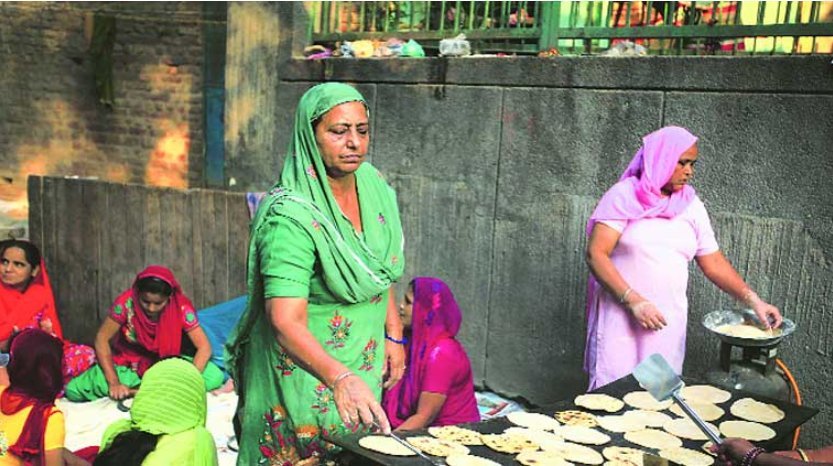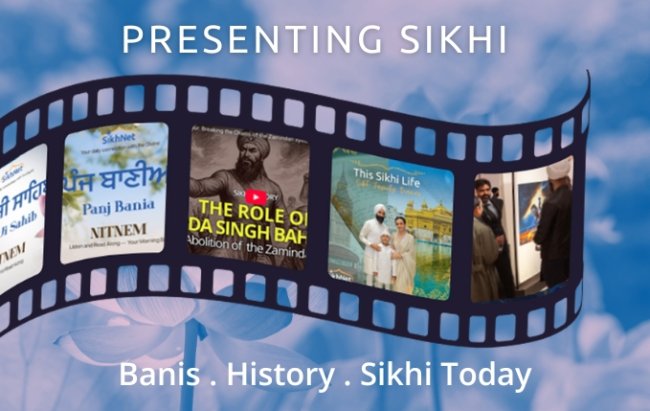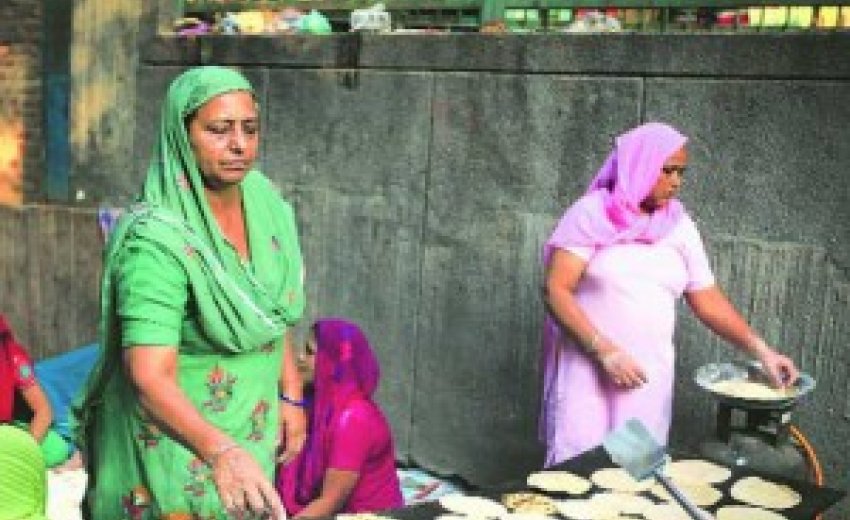 |
| Women from the locality prepare food for the last day of prayer meeting held in memory of the victims. (Source: Express photo by OINAM ANAND ) |
It has been 30 years, but the widows of Tilak Vihar still tear up each time they recall the horrors of the 1984 anti-Sikh riots. Everyone in this West Delhi locality has a story of loss to share.
Outsiders to Tilak Vihar are greeted with an eight-foot banner with bloodstains painted across the letters ‘1984’. Residents have now become accustomed to politicians and mediapersons visiting them on the anniversary of the riots. They greet them and repeat their pleas for justice.
On the second day of the three-day prayers, held annually for the riots’ victims, women of the locality gather near the gurdwara and prepare a bhog for the concluding day.
Senior BJP leaders are expected to be present at the prayer meeting on Monday. Residents collect money and make arrangements for this meal.
One of the women preparing the meal is Gyaan Kaur. “I lost everyone in my parents’ and in-laws’ house, but I feel most heartbroken over the death of my son. He was to be married a week from the riots when they pulled him out of the house and killed him,” she said.
She said most young men in the locality grew up without knowing what it was to have a “complete family”. The government gave them houses in the widows colony and provided odd jobs in government offices and schools, she said.
“Very few people were educated. Even if they were, they had no proof So, we took up whatever jobs we were offered,” she said.
In front of the gurdwara, a young man, Gyaan Singh, sweeps the stairs and helps the women. Singh was two years old when his father, two uncles and two young brothers were killed in the riots.
“My mother tells me that she dressed me in my sister’s clothes to save me. I don’t recall the riots but i remember her struggle after that,” he said, adding that his mother scrubbed floors in the city’s posh colonies to fund his education.
Singh points at a picture of his father, Kirpal Singh, in a room of the gurdwara that has hundreds of framed pictures of the “martyrs” of ’84. “I have no memories of him, just his picture,” he said.
The pictures show men of all ages, young boys and the elderly. Some frames only show sketches of “those who either died before they managed to get a picture clicked or whose families never managed to save a picture as they ran for their lives,” Singh said.

